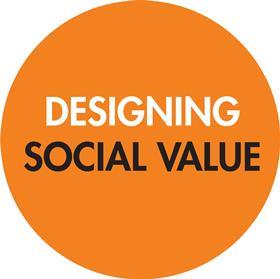Some PQQs now give 30% of marks to social value - but that’s not the only reason to care, says Flora Samuel, Building Design’s new social value columnist

Building Design’s intention to get behind social value comes at a really important time. The advent of social value (in other words wellbeing) is a really important opportunity to get people-centred design (and architects) back into the heart of the construction agenda.
Since the advent of the Social Value Act 2012 in England and the Wellbeing of Future Generations (Wales) Act 2015, social value has been gaining traction as a requirement of procurement, contracts and planning in the public sector (UKGBC, 2019).

Yet there is as yet very little agreement on how it should be measured. A recent consultation by the UK government on the percentage that should be attributed to social value in procurement suggested 10%. Yet it seems that bodies such as Greater Manchester are already attributing a weighting of 30% in their decision-making on bids. The rise of social value in the evaluation of projects, decisions relating to land value and the delivery of section 106 agreements seems inevitable.
At the same time there is growing consensus on the wellbeing impact of design and placemaking (Design Council, 2018), particularly now that social prescribing is becoming such an integral part of NHS activity (NHS England, 2018). Organisations such as HACT have been developing social value proxies for use by housing associations and local authorities to collect information on their portfolios but until now no toolkits have been developed specifically to capture the social value of design.
Taking its cue from local authority procurement, the construction industry tends to focus on the creation of jobs and apprenticeships when trying to prove social value. Anecdotally loopholes in the process are being exploited as this process is poorly monitored and can lead to an ex-offender being offered a job for a day in a part of the country entirely unrelated to the original project.
These are just some of the reasons why architects need to get behind social value. If they don’t do it others will
Instead a multi-dimensional approach to social value is needed which also recognises the impact of the design of buildings and places in terms of wellbeing (for example, active lifestyles and connection to nature) and the learning achieved by involving communities in the building of their own projects.
The social value of material specification – using local products and services – urgently needs attention from architects and can be fed into discussions about embodied carbon and lifecycle costs.
Design value is widely accepted to be the sum of environmental value and economic value and social value (Serin et al., 2018). In other words, the commonly used triple bottom line of sustainability.
These are the measures currently used in HM Treasury’s Green Book, the means by which the UK government makes its cost benefit analyses. While environmental value is generally measured in carbon (sometimes with the addition of biodiversity and air quality) and there is general agreement on economic value (albeit flawed – see the work of economist Marianna Mazzucato), there is little agreement on how social value should be measured.
There are a variety of existing systems for capturing social value – the National TOMS Social Value Portal is sometimes used by local authorities for procurement and now includes a Real Estate Plug-in. (TOMS, 2019)
HACT’s Social Value Bank is another example that we draw on extensively (HACT, 2015). One of the key aims of the highly pragmatic Social Value Toolkit for Architecture to be published by the RIBA in the new year is to help architects to navigate the social value terrain, making the best of existing systems to demonstrate value in monetisable terms. While many architects may rail against the “dragon of measurement culture”, social value will not be taken on board unless it is presented in terms easily digestible by government and client bodies.
In an increasingly data-driven environment we have to find ways to capture intangible impacts or they will not figure in future city models such as Digital Twins on in the next generation of BIM. Nor will they be included as targets within outcome-based procurement or insurance-backed alliancing (see for example the work of IPInitiatives with Cullinan Studio at Dudley College).
These are just some of the reasons why architects need to get behind social value. If they don’t do it others will.
Postscript
Flora Samuel is professor of architecture in the built environment at the University of Reading’s new School of Architecture. She is an advocate for architectural research and its role in the demonstration of social value. She is former vice president for research at the RIBA. Her book Why Architects Matter was published in 2018.
















3 Readers' comments